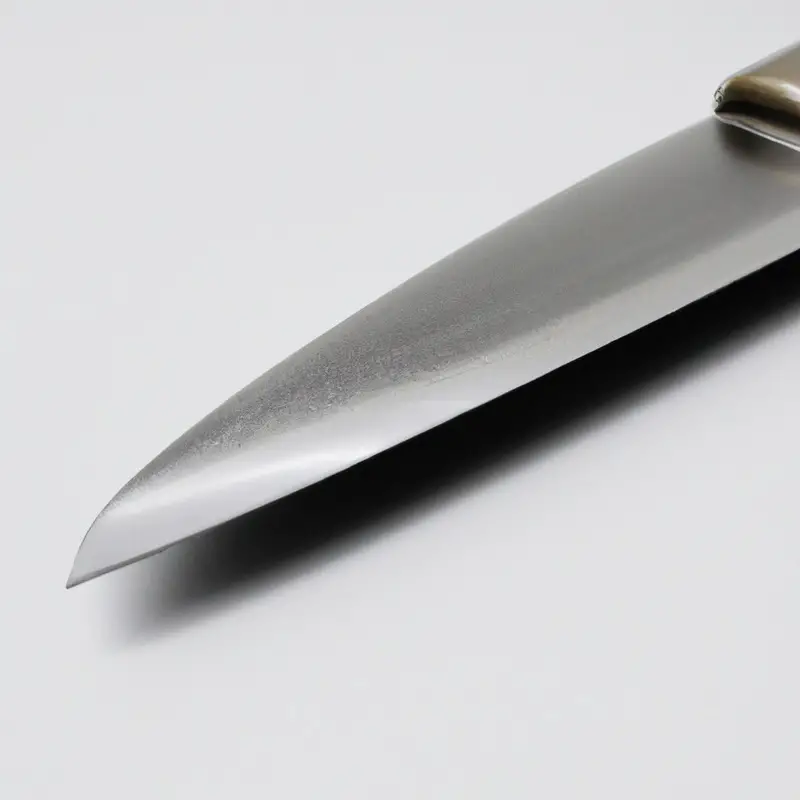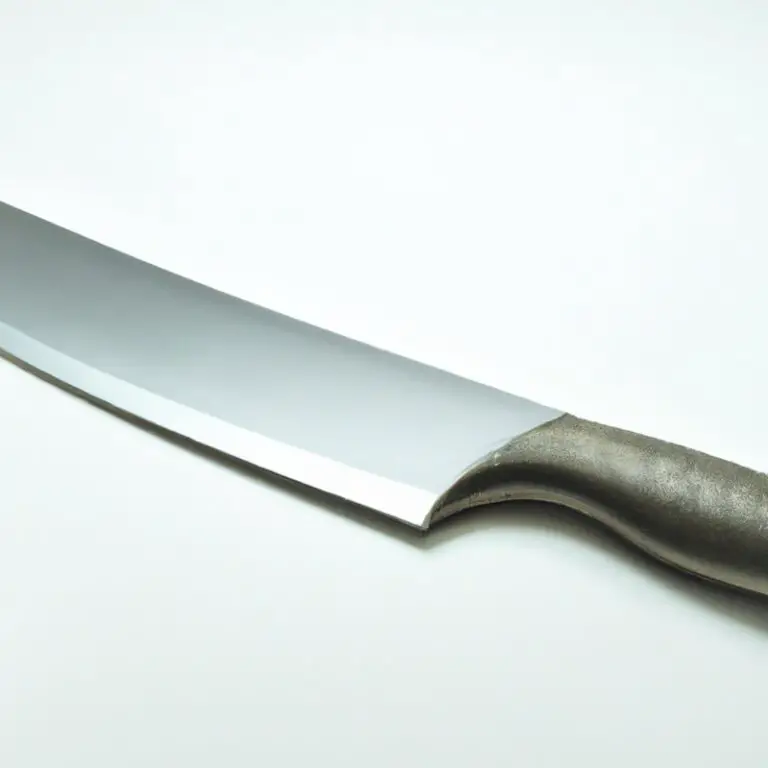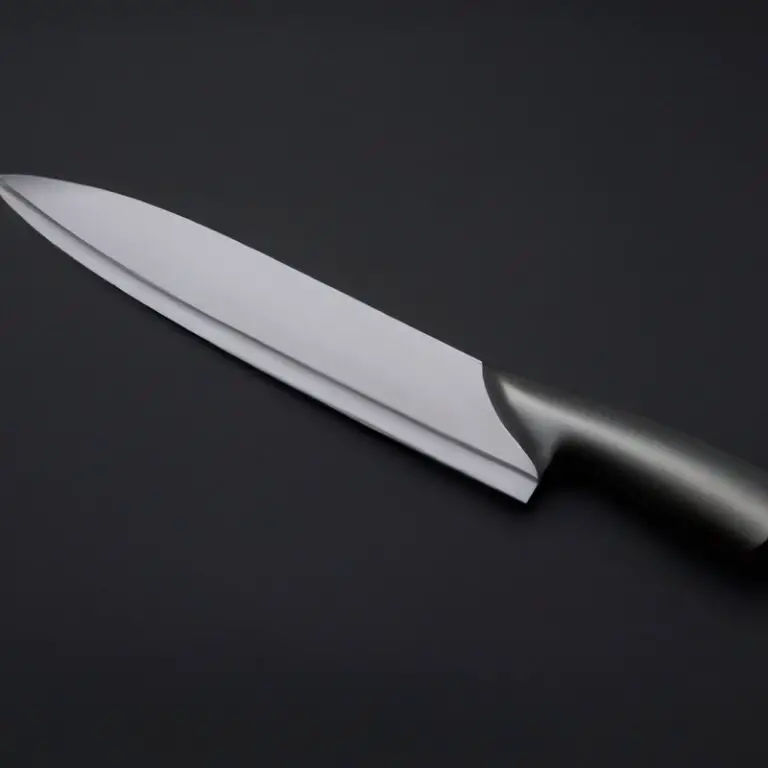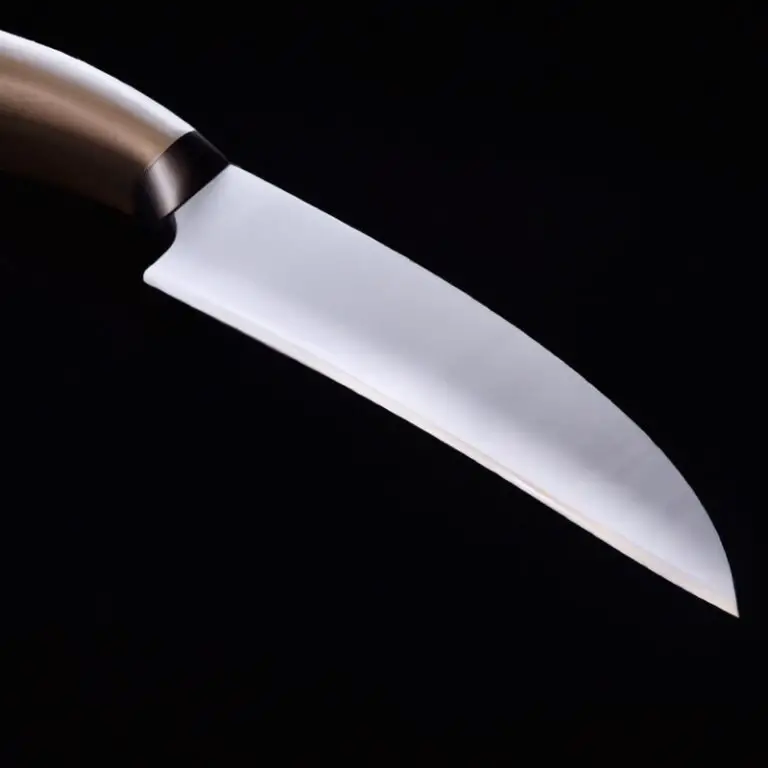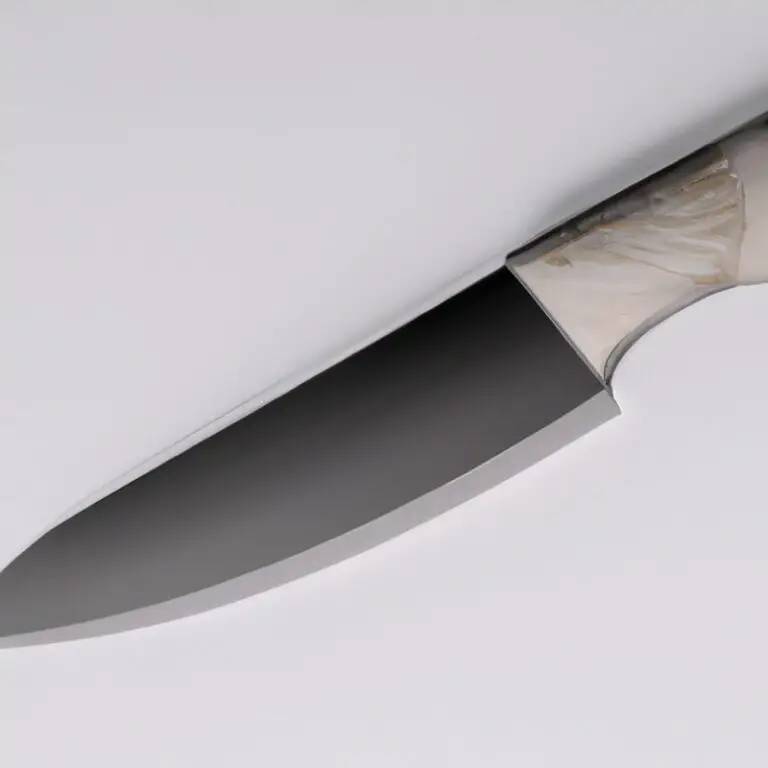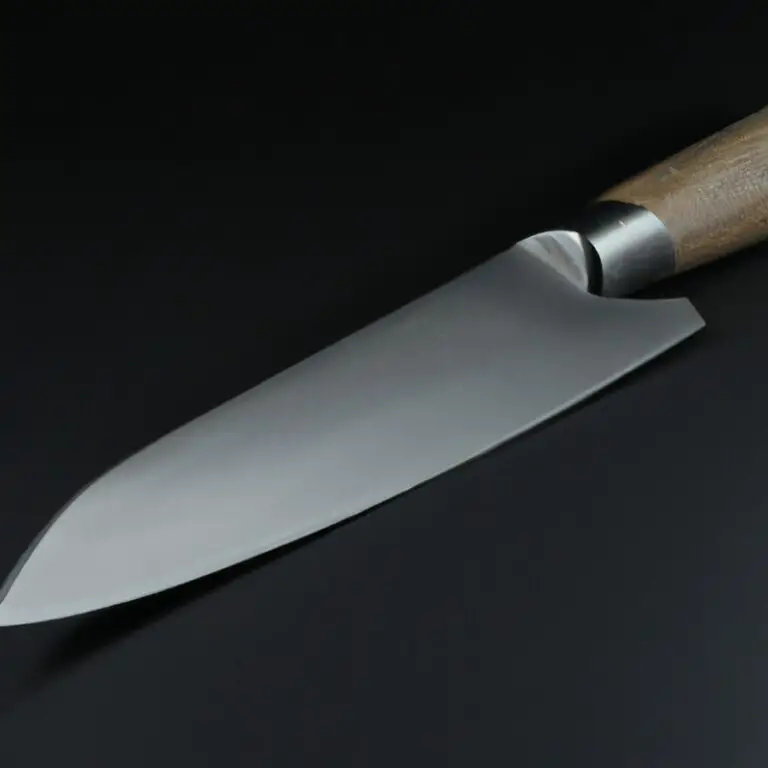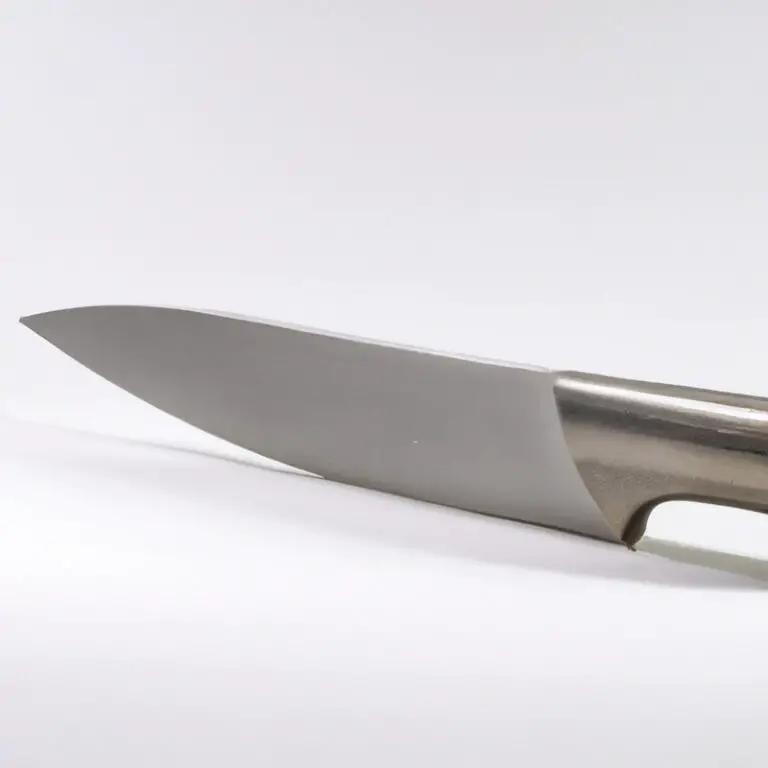Are Santoku Knives Suitable For Precision Tasks? – Explained
Key Takeaways:
- Santoku knives are versatile and ideal for precise cuts, but their shorter blade length may not be suitable for larger tasks.
- The design of Santoku knives lends itself to finer, more controlled cuts, making them a popular choice for professional chefs.
- When choosing a Santoku knife, consider the size and shape of the blade, the material, and the handle for optimal precision and ease of use.
- While Santoku knives can be reliable tools for precision tasks, it’s important to choose a reputable brand and maintain the knife properly for optimal performance.
Do you believe that having one excellent knife in your kitchen arsenal can make all the difference? Santoku knives, with their unique features and versatility, might be the answer to your precision cutting needs.
But, are they really suitable for intricate and precise tasks?
As a cooking enthusiast and experienced chef, I have used Santoku knives in various scenarios and will take a closer look to help you decide. From the anatomy of the knife to techniques and grip, I will guide you through the pros and cons of using a Santoku knife for precise tasks and explain why it could be a valuable addition to your kitchen.
| Santoku Knife Characteristics | Precision Tasks |
|---|---|
| Shorter and thinner blade than a traditional chef’s knife | May not be suitable for cutting through large and tough ingredients |
| Flatter blade profile, making it easier to slice through ingredients in a chopping motion | Suitable for precision slicing, dicing, and mincing tasks |
| Lightweight and versatile, allowing for agile movements and versatility in the kitchen | May not be suitable for heavy-duty tasks that require more force and leverage |
| Hollow edges may reduce friction and prevent food from sticking to the blade | May not be suitable for tasks that require a very sharp edge, such as cutting through tough meats or fibrous vegetables |
| May come with a granton edge that creates air pockets between the blade and the food, reducing friction and preventing food from sticking | Can be suitable for precision tasks that require a smooth and clean cut, such as slicing sushi or preparing delicate herbs and spices |
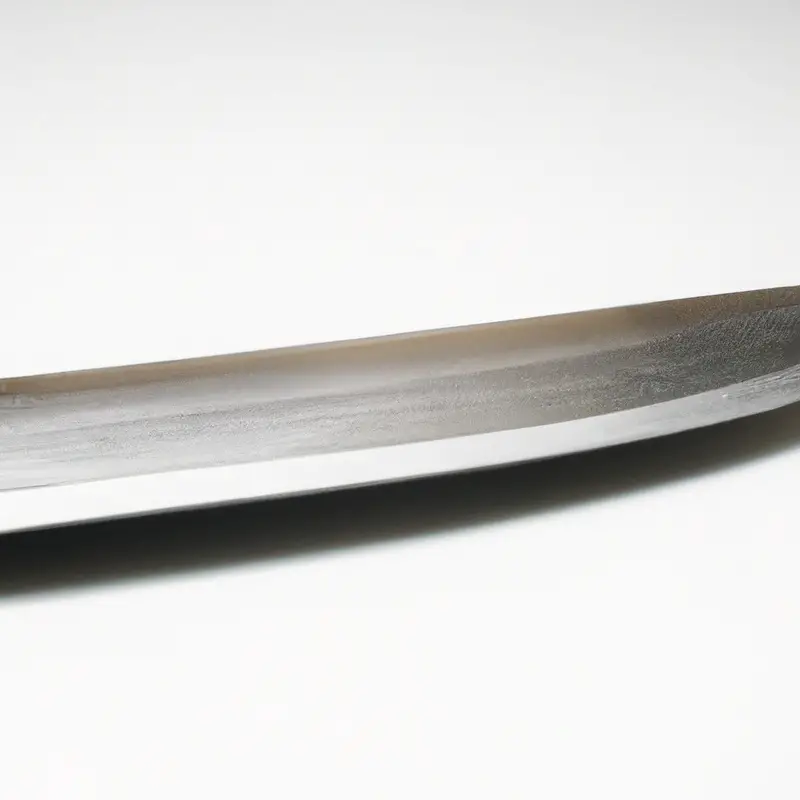
Understanding the Santoku Knife: A Versatile Blade with Unique Features
The Santoku knife is a versatile blade with unique features originally from Japan. Unlike the Western Chef’s knife, the Santoku blade has a straight edge with a shorter and wider blade that tapers to a sharp point.
Additionally, the knife has hollow-ground indentations known as ‘Granton edges,’ which reduce friction when slicing.
The Santoku knife’s design makes it perfect for precision tasks, such as mincing, dicing, and chopping vegetables, fruits, and boneless meats. The blade’s wide surface area helps in picking up food items and transferring them to a bowl or plate.
Moreover, the Santoku knife’s ergonomic handle ensures a comfortable and secure grip, and the offset blade provides a better view of the cutting surface.
With its versatility, durability, and ease of use, the Santoku knife is a must-have in any kitchen, whether you’re a professional cook or a home chef. When choosing a Santoku knife, consider the blade’s length, weight, and balance, as well as the quality of the steel and handle material.
Regular sharpening and maintenance are also crucial to maintain optimal performance.
Overall, the Santoku knife’s versatility, unique features, and precision make it a suitable blade for daily use, regardless of the task at hand.
The Difference between Santoku Knives and Western Chef’s Knives
Santoku knives and Western chef’s knives are both versatile kitchen tools, but they have distinct differences. Santoku knives typically have a shorter, wider blade with a rounded tip.
This design offers a straighter edge, allowing for cleaner cuts and reducing the likelihood of food sticking to the blade.
The handle of a Santoku knife is generally lighter and more balanced, making it easier to control the blade with precision. In contrast, Western chef’s knives often have a longer, narrower blade with a pointed tip.
This shape can be more versatile for certain tasks and provides a more rocking motion while cutting.
The handle of a Western Chef’s knife is often heavier, providing added leverage and power during cutting. Overall, the choice between a Santoku knife and a Western chef’s knife depends on personal preference and the specific task at hand.
For precise cuts and slicing, the Santoku knife is often a preferred choice due to its lighter weight and straighter edge.
However, for tasks that require more versatility or heavier cutting, a Western chef’s knife may be more suitable.
The Anatomy of a Santoku Knife: Blade, Handle, and Bolster
A Santoku knife typically consists of a blade, handle, and bolster. The blade is made of high-carbon stainless steel, and its edge is sharpened to a 10 to 15-degree angle, producing a sharper edge than most Western knives.
The blade’s unique design features a flat edge with a curve at the tip, allowing it to excel at chopping and slicing motion.
The handle is usually made of hardwood, plastic, or composite material and is ergonomically designed to fit comfortably in your hand. The bolster serves as a transition between the blade and handle and provides balance when using the knife.
Overall, the Santoku knife’s anatomy is specifically designed to make precise cuts and perform various culinary tasks efficiently.
The Benefits of Using a Santoku Knife for Precise Cuts and Slicing
The Santoku knife is a great option for those who look for precision and accuracy when slicing or chopping ingredients. The unique design of the blade featuring a flat edge and a rounded tip allows for a smooth rocking motion that enables precise cuts on vegetables, fruits, and meats.
Additionally, the wide blade of the Santoku knife provides enough space for your fingers to rest on the knife’s blunt side, ensuring optimal grip and control.
The blade’s thinness also makes it easier to make clean cuts, allowing for less bruising or damage to delicate ingredients. Overall, the Santoku knife provides excellent precision for a variety of cutting tasks, making it a valuable addition to any home or professional kitchen.
How to Choose the Right Santoku Knife for Precision Tasks
When choosing a Santoku knife for precision tasks, there are several factors to consider:
- Blade Size: The blade size should be selected based on the task at hand. A larger blade may be suitable for cutting larger items, while a smaller blade may be better for delicate tasks.
- Blade Material: Blades made of high-quality stainless steel or carbon steel offer durability and sharpness. However, the blade material can also affect the price.
- Handle: Look for a handle that is comfortable to hold and provides a secure grip, preventing any accidental slipping which could lead to injury.
- Weight and Balance: The ideal Santoku knife should be well-balanced and easy to manage. Consider the knife’s weight and balance to ensure maximum performance.
- Purpose: Consider what your purpose of the knife is, for example, if you want to cut through meats or vegetables.
By keeping these factors in mind, you can select the perfect Santoku knife for precision tasks and ensure the best results in your kitchen.
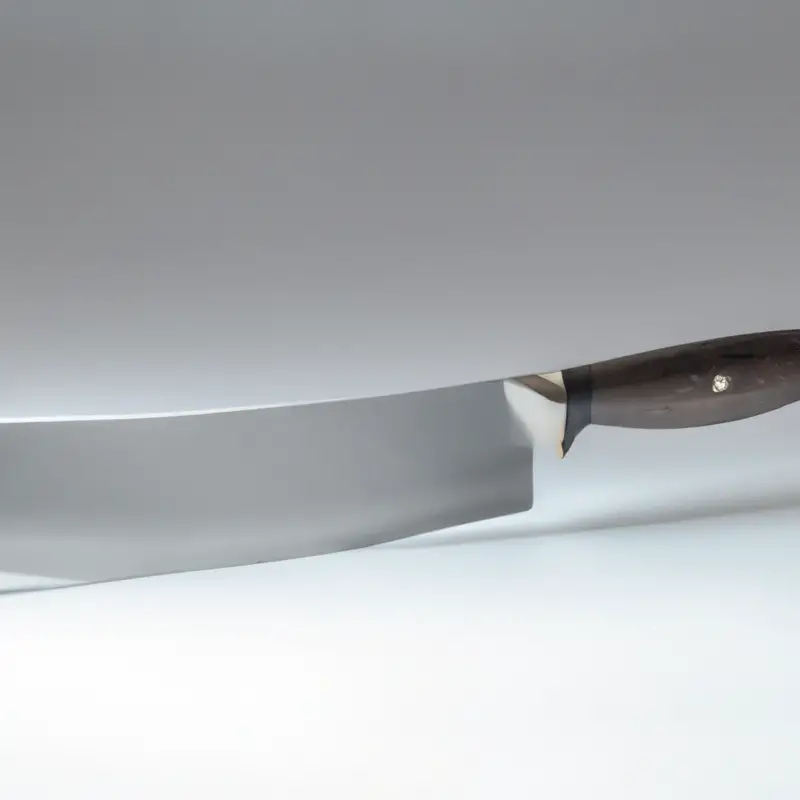
Sharpening and Maintaining Your Santoku Knife for Optimal Performance
Sharpening and maintaining your Santoku knife is crucial to ensuring optimal performance and longevity of the blade. Here are some tips to keep your Santoku knife in top condition:
- Use a sharpening stone or honing rod to maintain the sharpness of the blade. Hold the blade at a 20-degree angle and use even strokes on each side of the blade.
- Clean your knife after each use and avoid putting it in the dishwasher. Hand wash with warm water and mild soap, then dry immediately to prevent rust.
- Store your knife in a knife block or magnetic strip to protect the blade and prevent accidental dulling.
- Avoid using your Santoku knife on hard surfaces like ceramic or glass, as this can damage the blade. Use a cutting board made of wood or plastic instead.
- Have your knife professionally sharpened once every year or so to maintain its optimal performance.
By following these simple tips, you can ensure that your Santoku knife remains in top condition and delivers the precision cuts you need in your kitchen.
Using a Santoku Knife for Different Precision Tasks: Meat, Fish, Vegetables, Fruits, etc
A Santoku knife is versatile, and it can be used for various precision tasks. For precision cutting of meat, Santoku knives can make swift, clean, and accurate cuts.
For fish, its thin and sharp blade performs delicate operations that some hefty chef’s knives can’t, like filleting, deboning, and skinning.
For fruits and vegetables, its sharp blade slices through easily, making delicate cuts on soft produce. One of the advantages of using a Santoku knife is that it performs well on different tasks, reducing the need to switch knives constantly.
However, it is essential to use the correct technique and grip when using a Santoku knife to obtain the best results.
Also, it is crucial to choose the appropriate size of Santoku knife that fits the cutting task at hand. Overall, the Santoku knife is a reliable option for precision tasks, and it is worth considering adding it to your kitchen toolset.
The Importance of Technique and Grip When Using a Santoku Knife
Technique and grip are crucial when using a Santoku knife for precision tasks. The unique design of the knife, with its flat edge and rounded tip, requires the user to adjust their cutting technique.
The right technique involves keeping the blade facing downwards and slicing using a forward and backward motion.
This motion, combined with the right grip, allows for precise cuts without exerting too much force. Additionally, the grip of the knife plays a significant role in achieving precision cuts.
The grip should be firm but not too tight, as this can lead to fatigue and loss of control.
The user should hold the handle with three fingers, with the index finger resting on the back of the knife to guide it. Proper technique and grip also help minimize the risk of injury while using a Santoku knife.
Incorrect technique or grip can result in slips or cuts, leading to accidents.
Therefore, it is essential to practice and perfect the right technique and grip before using a Santoku knife for precision tasks. Overall, technique and grip are integral components when using a Santoku knife for precise cuts and slicing.
The right technique and grip can enable the user to achieve precision cuts with minimal effort while minimizing the risk of injuries.
The Pros and Cons of Using a Santoku Knife for Precision Tasks: A Comparative Analysis
The Santoku knife is a versatile blade that excels at precision tasks such as slicing, chopping, and dicing. However, there are pros and cons to using a Santoku knife for these tasks compared to other knives on the market.
Pros:
- The wide blade of the Santoku knife allows for efficient scooping and transferring of ingredients.
- The unique shape of the blade allows for a rocking motion that makes chopping and slicing more efficient.
- The thinner blade allows for cleaner and more delicate cuts on fruits and vegetables.
Cons:
- The Santoku knife may not be as effective at heavy-duty tasks, such as breaking down large cuts of meat or butchering.
- The blade’s thinness can also make it more vulnerable to chipping or breaking, especially when used on hard surfaces.
- The shorter length of the Santoku knife’s blade may not be suitable for larger items or for tasks that require a longer blade.
Overall, the Santoku knife excels at precision tasks and is a great addition to any kitchen. However, it may not be the best option for heavier tasks or tasks that require a longer blade.
Why You Should Add a Santoku Knife to Your Culinary Arsenal: Practical Advantages and Benefits
Adding a Santoku Knife to your culinary arsenal can provide several practical benefits and advantages. Here are some of the key advantages of using a Santoku Knife:
- Versatility: The Santoku Knife is incredibly versatile and can be used for various tasks, such as chopping, slicing, and dicing fruits, vegetables, meats, and fish.
- Precision: The sharp blade and ergonomic design of the Santoku Knife make it suitable for precise cuts, allowing you to achieve even slices with minimal effort.
- Comfort: The Santoku Knife’s ergonomic handle provides a comfortable grip, reducing hand fatigue and strain.
- Easy maintenance: Properly maintaining a Santoku Knife is relatively straightforward, and with regular honing and sharpening, the blade retains its sharpness for longer.
- Aesthetics: The unique and aesthetically pleasing design of the Santoku Knife makes it an attractive addition to any kitchen.
Adding a Santoku Knife to your collection can provide numerous practical benefits and advantages. Whether you’re a professional chef or a home cook, a Santoku Knife can help you achieve precision and versatility in the kitchen.
Final Verdict
Santoku knives are a versatile and efficient tool for precision tasks in the kitchen. Their unique design, with a thinner blade and granton edge, allows for clean and precise cuts in a variety of ingredients.
When choosing a Santoku knife, it is important to consider the blade material, size, and handle comfort to ensure optimal performance.
Proper maintenance and technique will extend the life and usefulness of your Santoku knife. While there are a few drawbacks to using a Santoku knife for certain tasks, their benefits greatly outweigh any limitations.
Adding a high-quality Santoku knife to your culinary arsenal is a smart choice for any serious chef or home cook looking to elevate their precision cutting skills.
Invest in a Santoku knife and experience the ease and precision of this remarkable kitchen tool.

